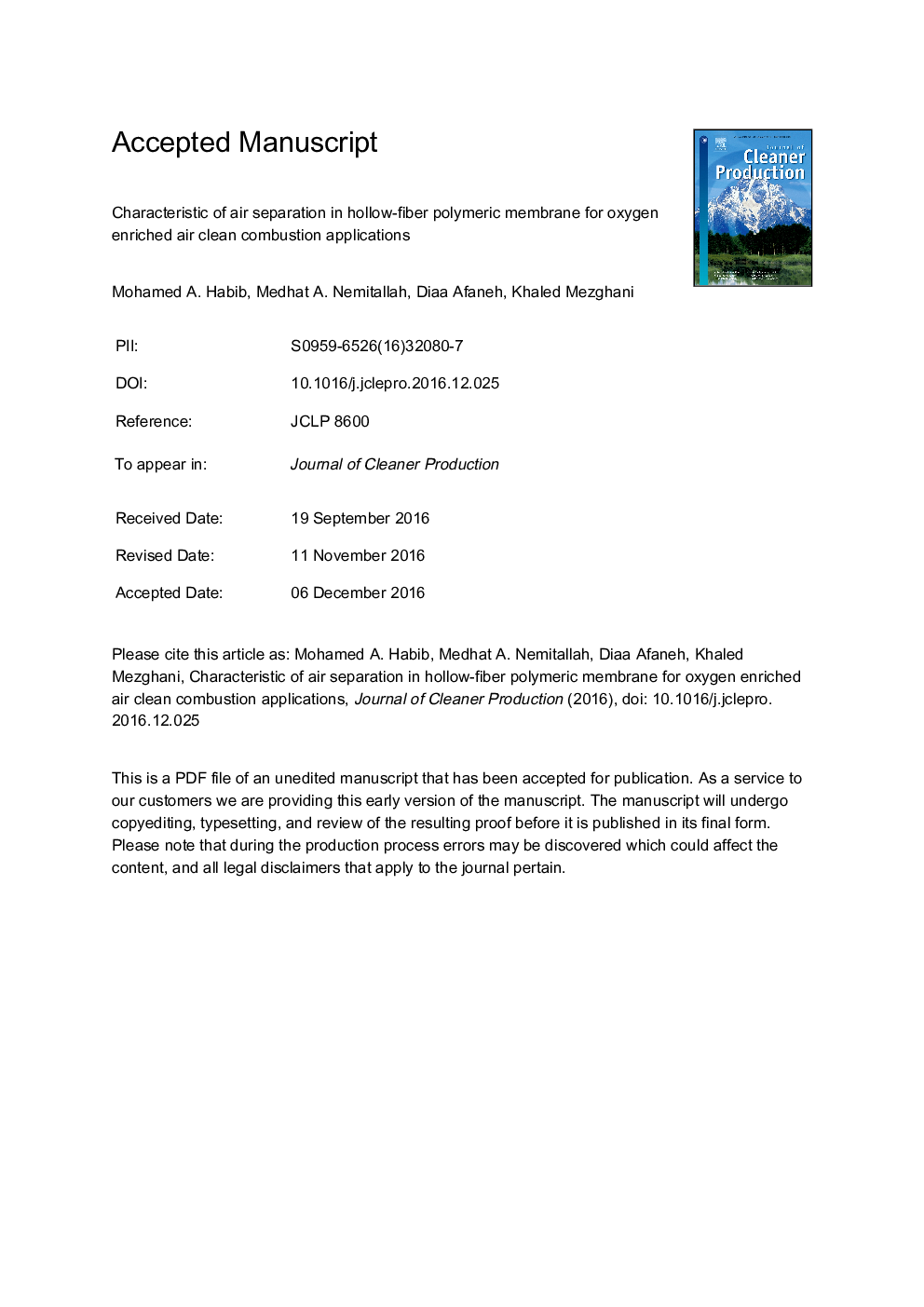| Article ID | Journal | Published Year | Pages | File Type |
|---|---|---|---|---|
| 5481140 | Journal of Cleaner Production | 2017 | 29 Pages |
Abstract
The characteristics of air separation in a hollow-fiber membrane unit are investigated numerically aiming at generation of highly oxygen-enriched air for clean combustion applications. A 2D axisymmetric mesh was generated using Gambit software and, then, was fed to Fluent 12.1 code. Detailed numerical study is presented for air separation using different polymers. Effects of sweep gas flow rate (from zero flow up to 1.15Â ÃÂ 10â7Â kg/s), feed gas flow rate (from 3.3Â ÃÂ 10â9Â kg/s up to 5.89Â ÃÂ 10â8Â kg/s), fed pressure (from 2Â atm up to 10Â atm) and membrane polymeric material (considering TR-PBO-co-PPL-28 and TR-PI-g-CD) on permeation fluxes and concentrations of O2 and N2 are investigated. Targeting higher exit O2 concentrations, multi-stage air separation unit is developed. The developed unit consists of three stages and the achieved oxygen mass fraction at outlet of first, second and third stages are 0.517, 0.8 and 0.914. Higher stage cut ratio is gained in the third stage as compared to first and second stages.
Related Topics
Physical Sciences and Engineering
Energy
Renewable Energy, Sustainability and the Environment
Authors
Mohamed A. Habib, Medhat A. Nemitallah, Diaa Afaneh, Khaled Mezghani,
